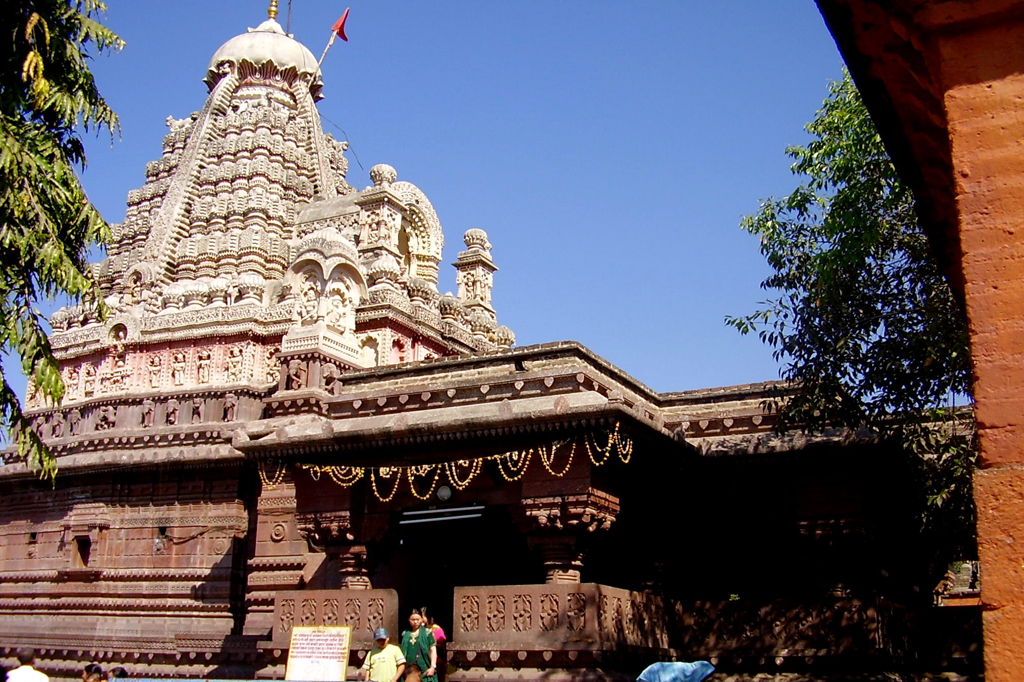
Day trip to Grishneshwar
LEAVE AURANGABAD
Pick up from your hotel in Aurangabad and drive for Grishneshwar Jyotirlinga day trip. Grishneshwar is just 30 km away from the city of Aurangabad. It takes less than hour to reach here by road.
ARRIVES GRISHNESHWAR JYOTIRLINGA
Arrives Grishneshwar. Upon arrival, visit Grishneshwar Jyotirlinga Temple.
Grishneshwar Jyotirlinga Temple:
Grishneshwar temple is an ancient Hindu shrine, dedicated to Hindu God Lord Shiva, revered as an abode of one of the 12 Jyotirlingas. The temple is located in a village called Verul which lies close to the Ellora caves. It is one of the most significant pilgrimage sites where Lord Shiva is worshipped and represented as a light image. Temple is made of red rocks and composed of a five tier shikara and also houses beautiful paintings and sculptures of various Gods and Goddesses. The temple was restored in 18th century by a famous female ruler of Malwa kingdom, Ramata Ahilyadevi Holker, who also re-constructed the Kashi Viswanatha Temple at Varanasi and Vishnu Paada at Gaya. Illustration of inscriptions on the wall of temples draws attentions of the visitors. Temple is also known as Ghushmeshwar Jyotirlinga, the sacred abode of Shiva.
Visit Ellora Caves:
Ellora is an outstanding archaeological site, 30 km north-west of Aurangabad, renowned for a series of 34 rock-cut cave temples spread over 2 km. Ellora is a UNESCO world heritage site, contain Hindu, Jain and Buddhist caves excavated out of the vertical face of cliff at the edge of a Charanandri hills in a linear arrangement.
34 caves contain 12 Buddhist caves dating back to 500-750 AD, 17 Hindu caves between 600-870 AD and 5 Jain caves from 800-1000 AD built in proximity, illustrate the religious harmony during this period of Indian history. Caves are the perfect example of Indian rock-cut architecture. It is also a protected site under Archaeological Survey of India. Buddhist caves are the oldest of all contain Chaityas or hall of worship and Viharas or monasteries, which were used for study, meditation and religious rituals. 10 caves are Viaharas out of 12 Buddhist caves.
Timings for Ellora Caves Visit:
9.00 AM to 17.30 PM Indian Standard Time (IST).
Ajanta Caves remain closed on Tuesday.
LUNCH TIME
After sightseeing of Grishneshwar and Ellora caves, go for Lunch at any good restaurant.
VISIT BIBI KA MAQBARA
Drive to see Bibi ka Maqbara and Panchakki.
Aurangabad is known for its principal monument, Bibi ka Maqbara lies in 03 km out skirt of Aurangabad city. It is a mausoleum of Mughal Emperor Aurangjebs wife Dilras Banu Begum, built by her son Prince Azam Shah in the memory of his mother between 1651 to 1661. Due to its similar design to the Taj Mahal in Agra, it is often called as Taj of Deccan or Mini Taj. Though, it is an imitation of Taj Mahal but the architecture fails to produce the magic of the Taj. Therefore it is also called as poor mans Taj due to being the poor replica of Taj Mahal. There is also a small archaeological museum behind the tomb.
Chief architect of the monument was the Persian Ustad Ata Ullah , the son of Ustad Ahmad Lahauri-chief architect of Taj Mahal in Agra. Ustad Ata Ullah designed the monument with engineer Hanspat Rai. The inscription on the walls of the tomb reveals the cost of the monument during that period was Rs. 665,283 and 7 Lakh. It took 6 years to complete the construction compared to the 22 years for Taj Mahal. It has four towering minarets like Taj Mahal. An octagonal lattice-screen of white marble surrounds the raised plinth supporting Rabia Daurani’s grave inside the tomb. The walk from the entrance to the monument is dotted with lush lawns, deep green cypresses and gurgling fountains. The pavements leading to the mausoleum are flanked by oblong reservoirs.
Panchakki:
Panchakki is basically a water mill, derived its name from the mill which was earlier used to grind grain for pilgrims. Panchakki complex is known to be an abode of great Muslim Sufi Saint Baba Shah Musafir. It had its own underground water channel which illustrates the scientific thought process put in medieval Indian architecture and engineering work. Panchakki was designed to generate energy via water brought down from a spring on a mountain.
RETURN TO AURANGABAD
After finishing the sightseeing of Bibi ka Maqbara and Panchakki, drive back to Aurangabad, which is just 5 km away from Auragngabad.
ARRIVES AURANGABAD
Arrives Aurangabad. Upon arrival, drop at your hotel.
